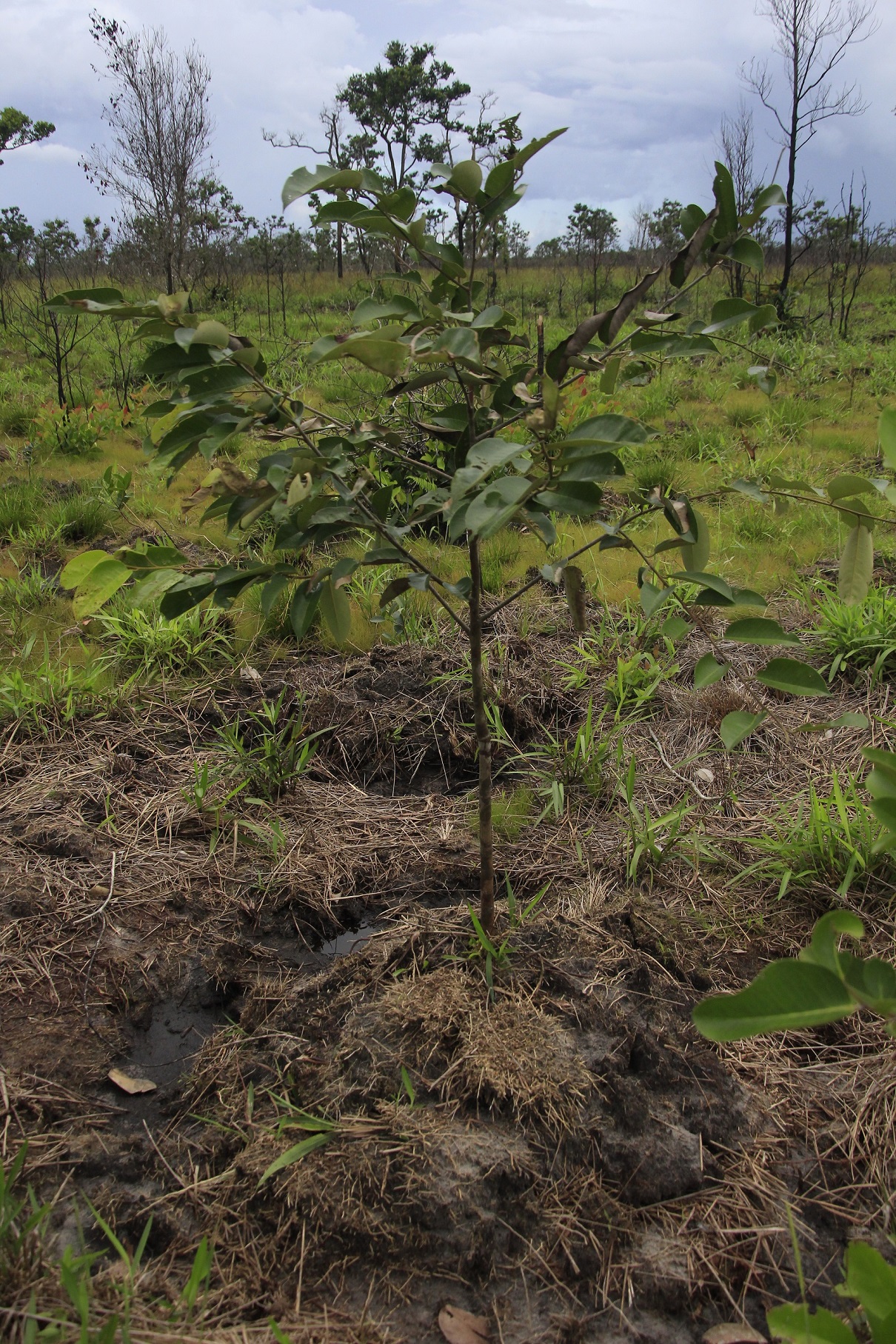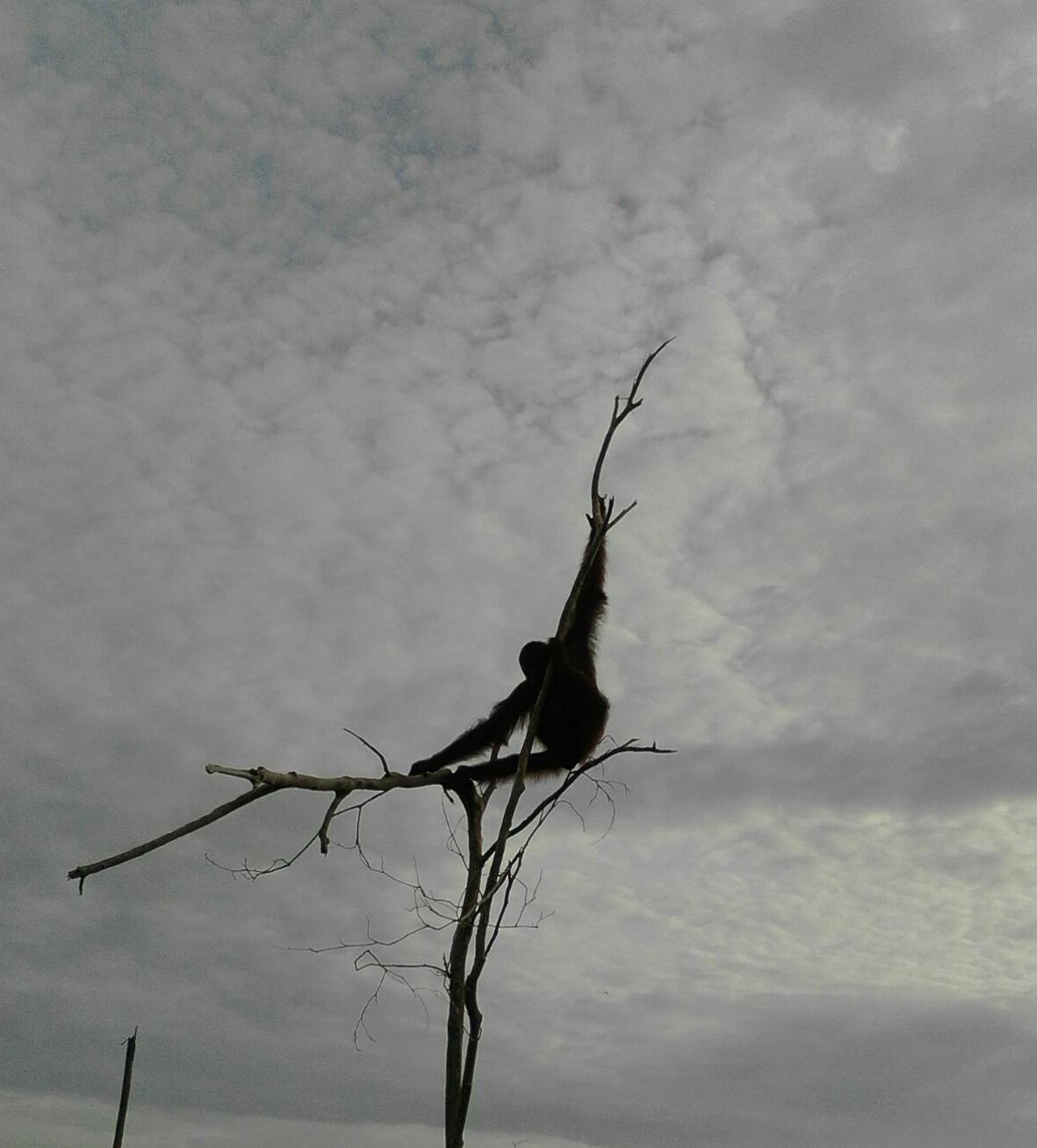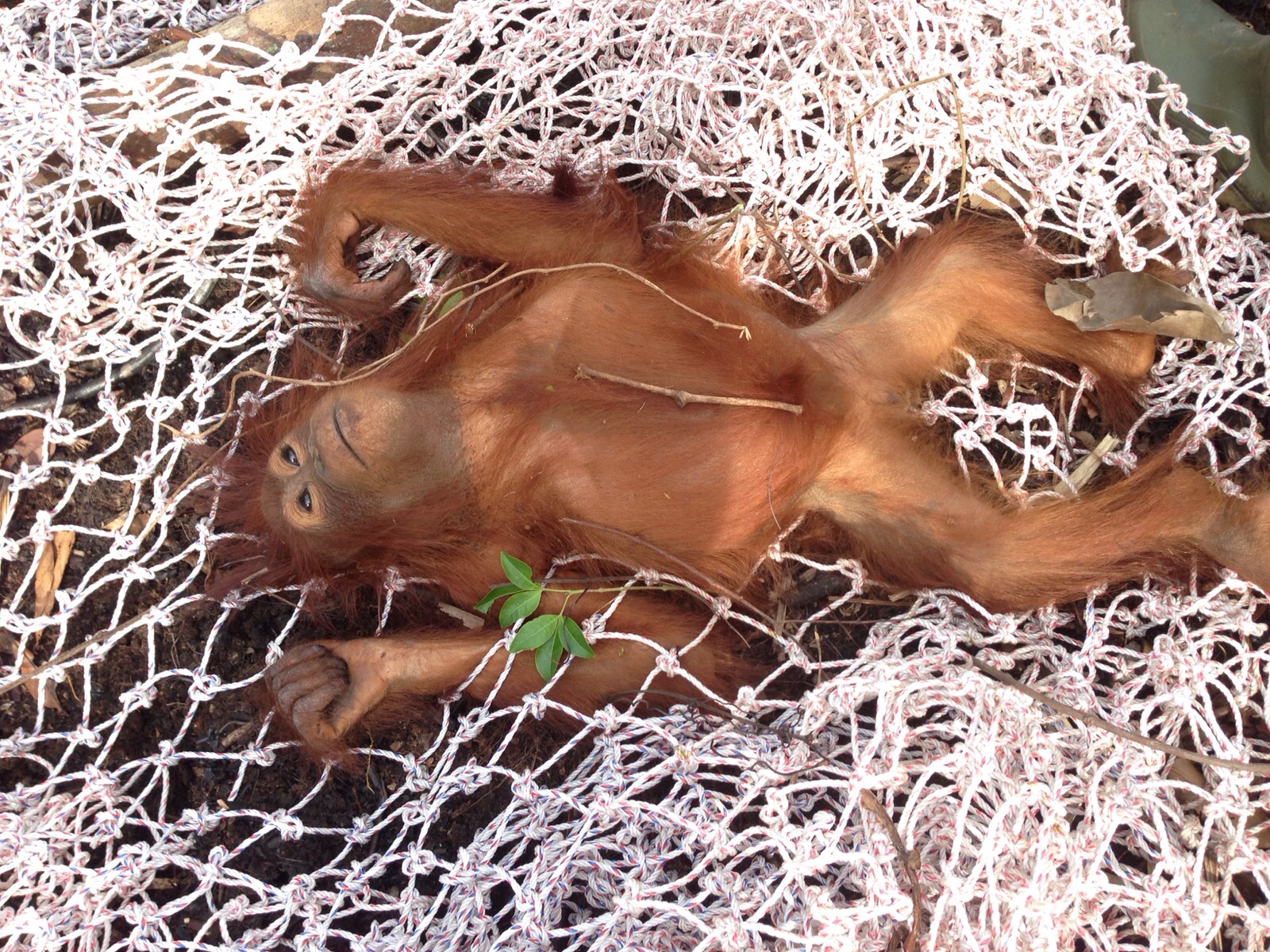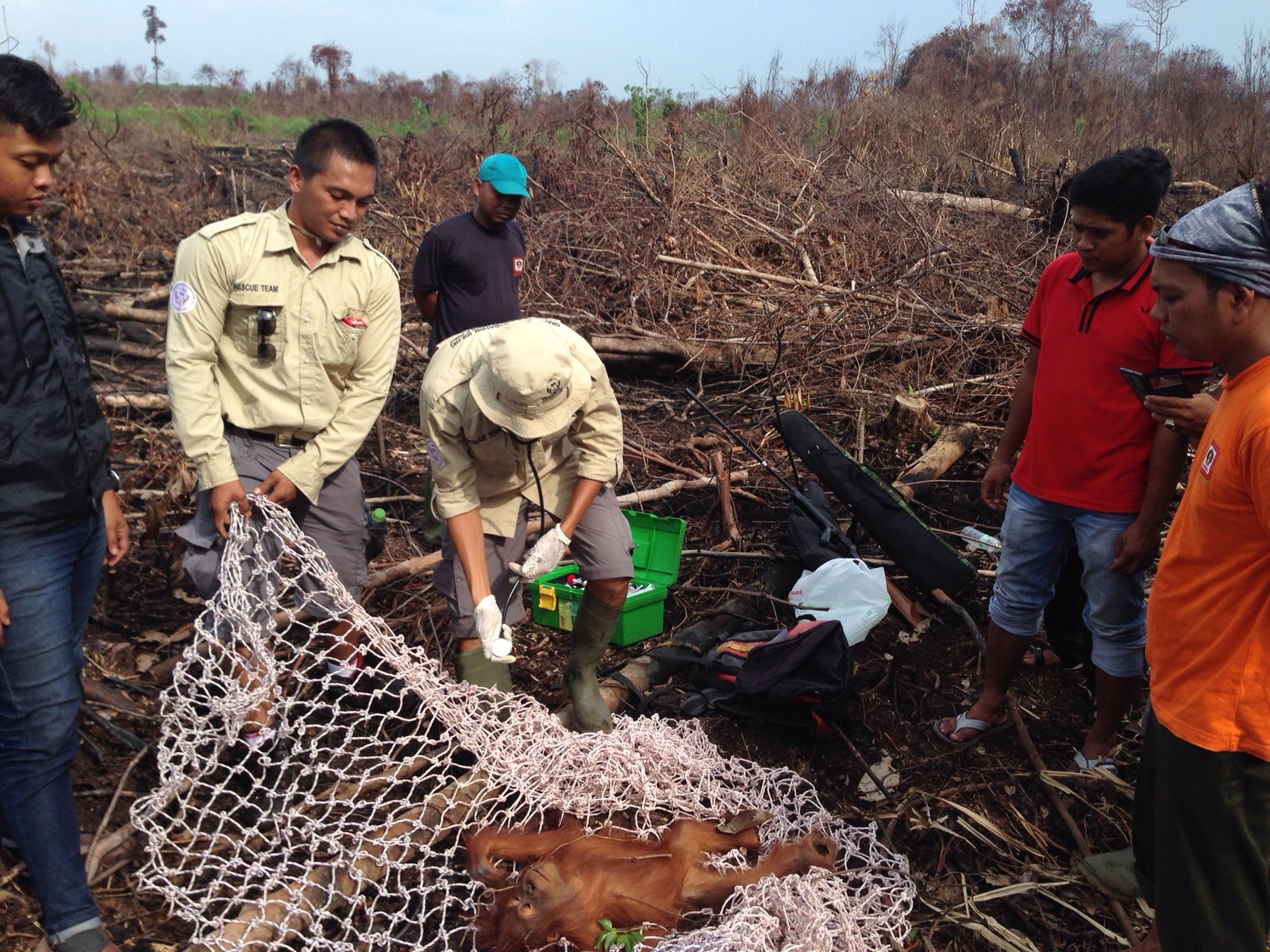We bring you great news from Danau Burung, our guard post in the south-west of the Lamandau Wildlife Reserve!
This area was badly affected by forest fires this summer, intentionally started by local inhabitants. In this area people started fires in the forest to quickly clear land of trees in order to encourage grass to grow, to attract deer and pigs for hunting. Fire is also used to clear land for "slash and burn" agriculture, in order to render it useful for farming. These forest fires caused widespread devastation throughout much of Kalimantan in 2015 following a lengthy dry season, causing them to burn out of control.
Thanks to two grants, from GRASP (Great Apes Survival Partnership) and Orang-utans in Not e.V (Orangutans in Peril, a German NGO) we were able to invest in a forest restoration project to enrich areas that suffered during the fires in 2015. Ubar trees (Syzigyum spp.) were chosen primarily to replenish the area. This is an endemic species to Kalimantan, which grows well in all forest types, and is less susceptible to burning than other species. The leaves and fruit are also a treat for orangutans!
Our partners from BKSDA (Nature Conservation Agency, Indonesia) have provided us with a tree nursery, which our staff are using to plant and grow seeds into seedlings, which are then relocated to areas around Danau Burung. Our Orangutan Foundation staff have now planted 1,500 seedlings in the area to restore the now barren areas of land. Our target is to plant 5,000 seedlings in the Danau Burung area, and with this news we can successfully acknowledge that we are a third of the way towards reaching our goal!
Forest restoration is paramount to the long-term survival of orangutans. If forest habitats are lost, orangutans cannot feed or protect themselves, and populations will perish as a result.
To DONATE towards our forest restoration project, quote "FOREST" with your donation! All contributions are greatly appreciated!
















